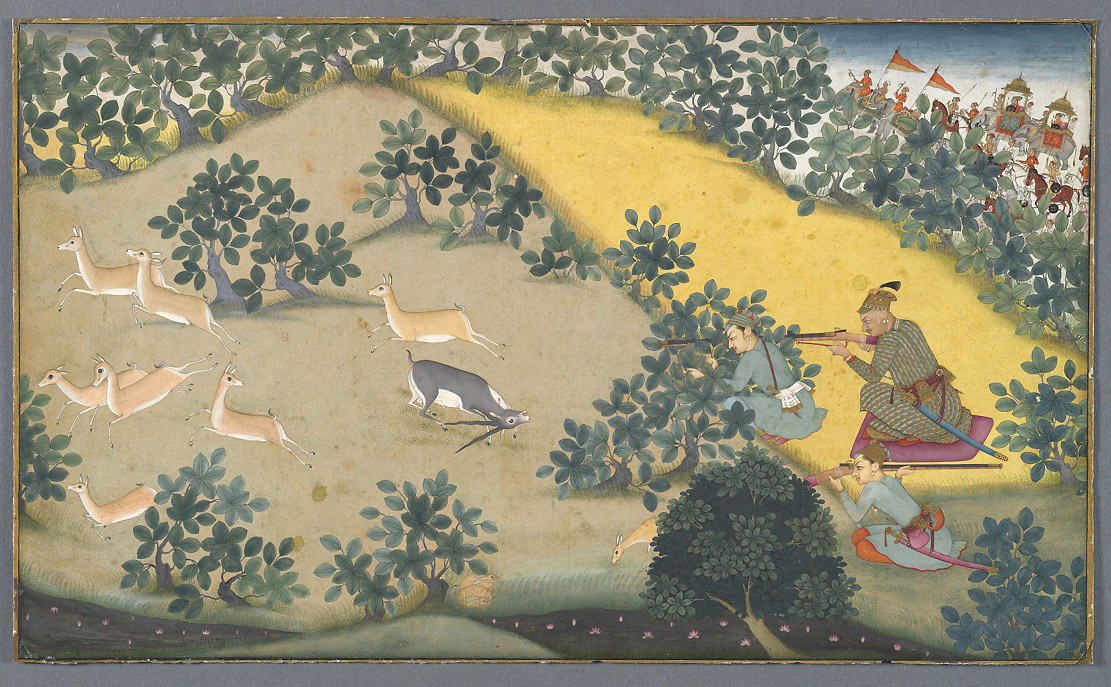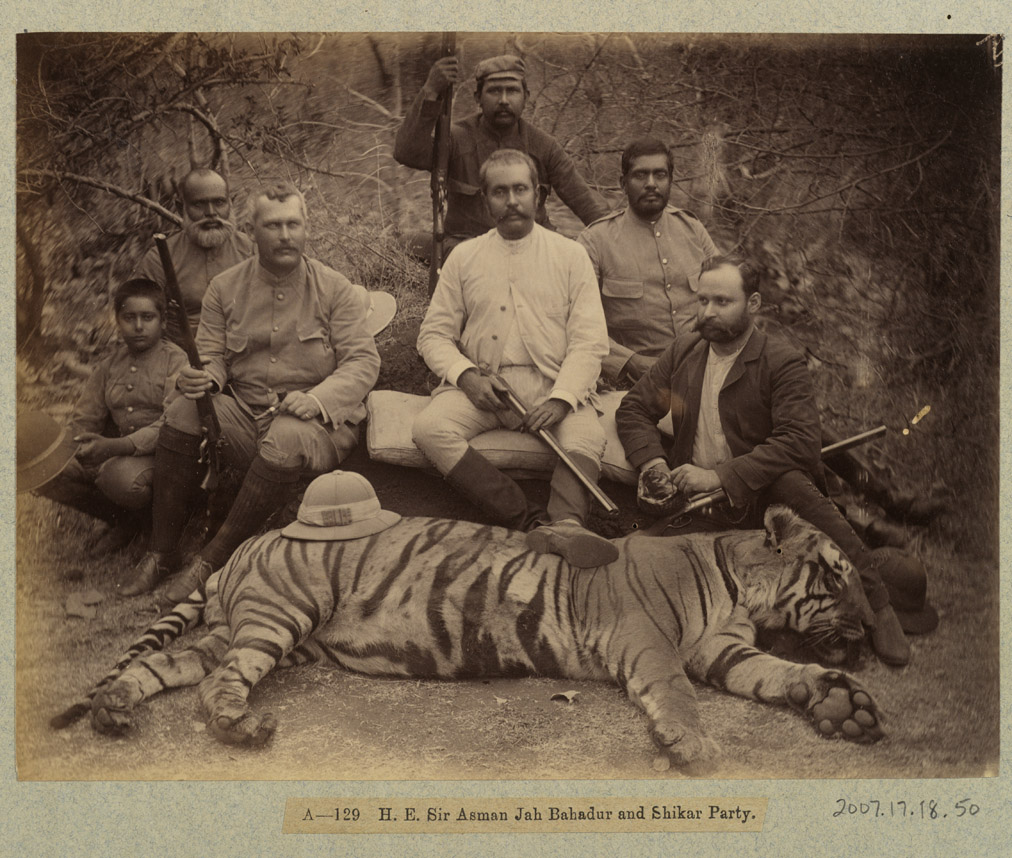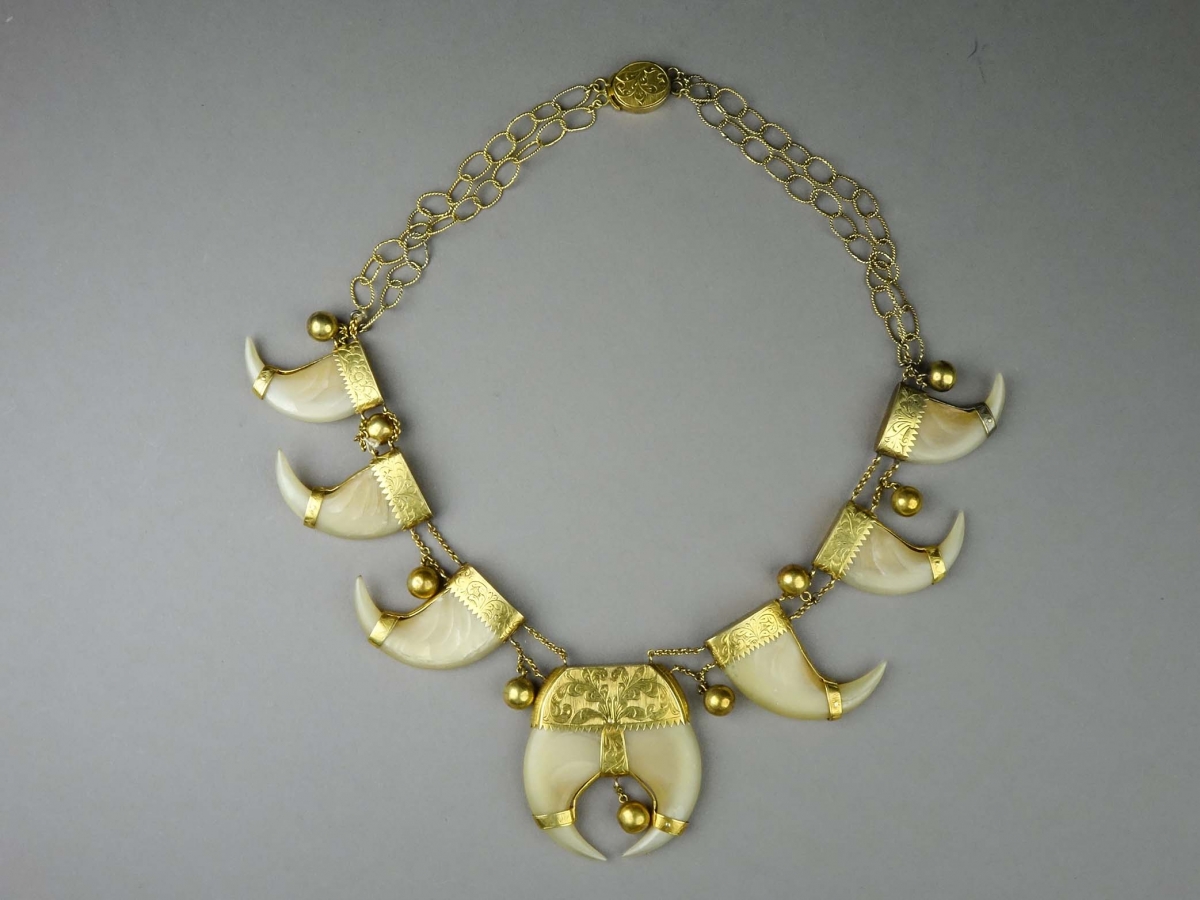New to ROM: Tiger Claw Necklace
Blog Post
Hunting trophy. Victorian jewelry. Conservation symbol.
This tiger claw necklace comes from the late 19th century, during the time of the British Raj in India. Such ornaments were made from the claws of tigers killed during popular elite hunting activities. On the one hand, it is quite a beautiful example of delicate Victorian jewelry. The claws, accounting for two paws likely from the same animal, are mounted in gold etched settings and strung on a delicate gold chain. On the other, it is a reminder of a recent past when the conservation of wildlife species was far from the minds of people. In this way, this artifact is both an element of personal adornment and a hunt trophy.

It is important to understand the necklace in the historical context of hunting too. The hunt was a main element of kingship, going back to ancient Mesopotamia. The organizing of large hunt parties, and the processes of tracking and killing powerful wildlife was understood to reflect the strength and skill of a king in battle. Images of a king hunting commemorated this and promoted his identity as a protector of his people.

In the 19th century, under the British Raj, hunting escalated to unprecedented proportions. The hunt was transformed from a marker of royal power to a popular elite pastime to simply a big game sport, as preserved in the many sepia-toned trophy photographs from that era. Increased demand, superior firepower, and the loss of habitat has reduced tiger populations in India from 40,000 to less than 2000 in a mere hundred years, by 1970. Still other sources estimate greater losses. In 1971, India banned tiger hunting and today there are 45 tiger reserves there. Today tigers are on the endangered species list of most countries. Tigers and tiger parts are illegal to hunt, buy and sell. International treaties and national legislation, such as CITES (the Convention on International Trade in Endangered Species of Wild Fauna and Flora), which Canada ratified in 1975, prohibit the international trade in species threatened with extinction, including tigers. CITES restricts the international sale and exchange of listed materials but does not prevent museums from accepting specimens with a known provenance and collection history. This necklace was brought into Canada prior to our CITES ratification in 1975, and the Convention encourages museums to acquire these legally obtained materials from private collections to prevent future illicit trade and sale.

This artifact is a recent addition to ROM’s collection, donated by Stacie Bunn, who inherited it from a family member. As was common at the time, the necklace was possibly an engagement gift to her step-grandfather stationed in India during WWII, and it was passed down afterwards. Stacie made a conscious choice to place the necklace in a museum collection, in part to discourage the trade of such items and to inspire tiger conservation efforts.



